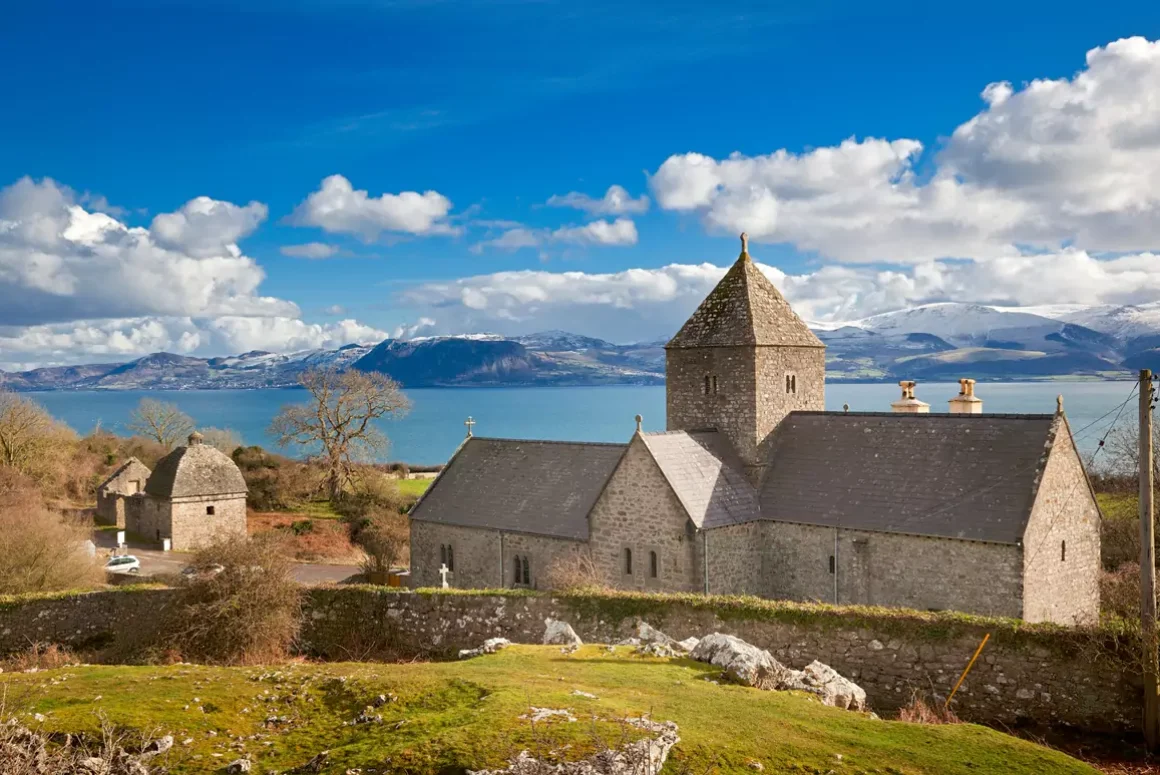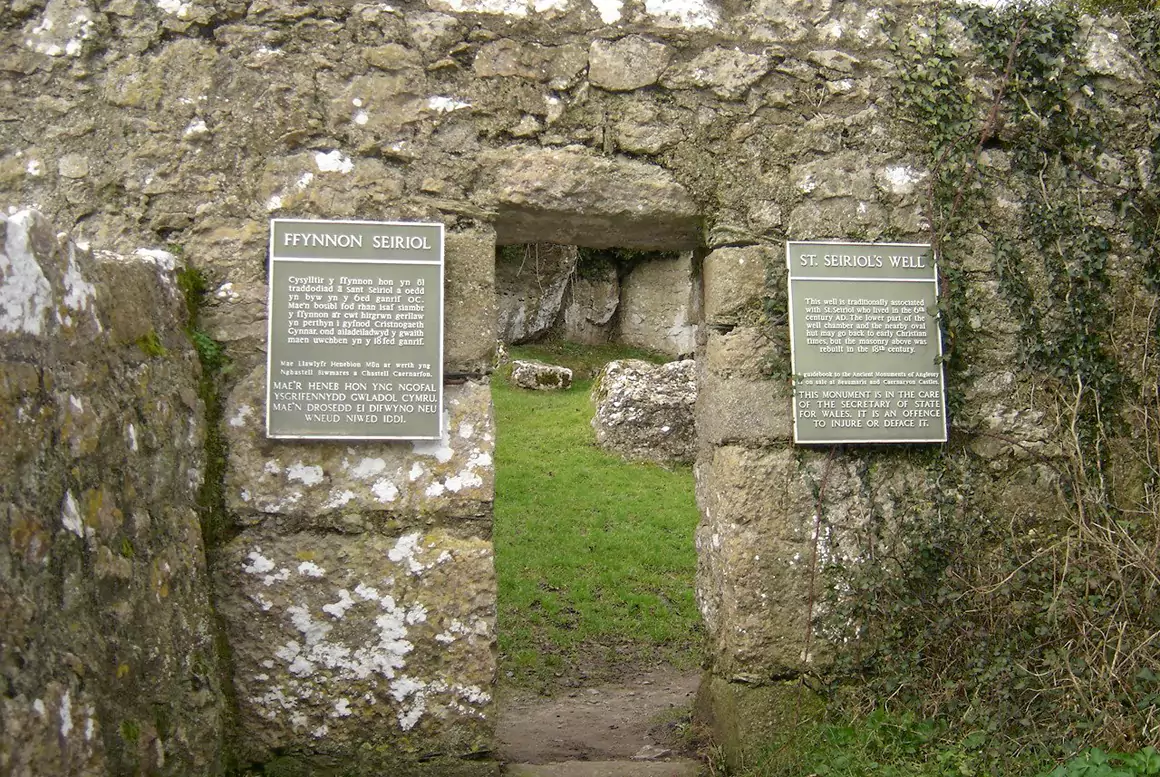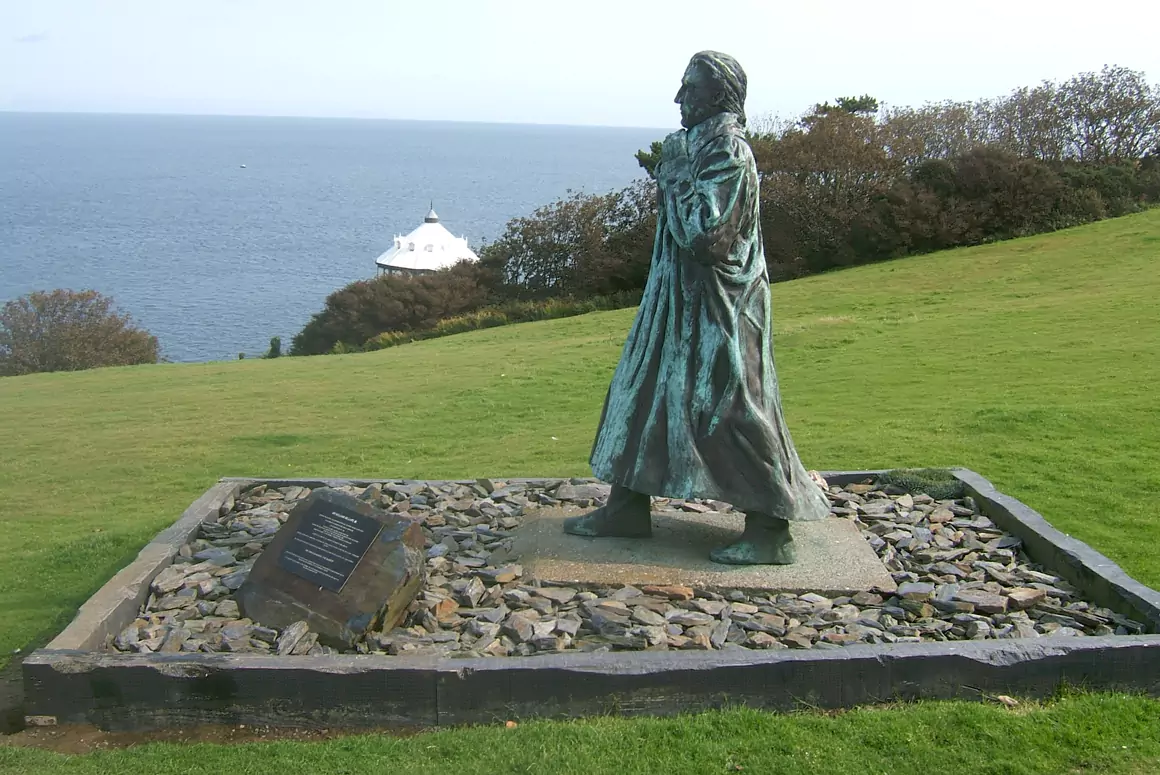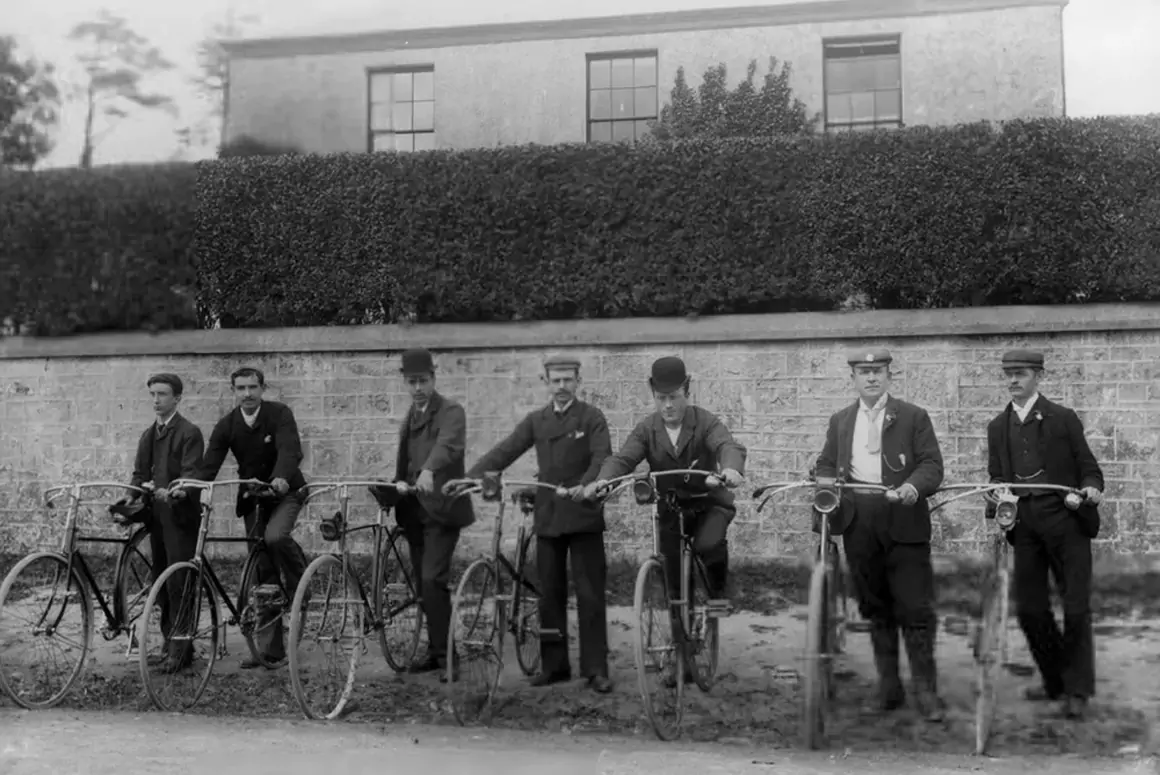Three miles north of Beaumaris and part of the community of Llangoed is the tiny village of Penmon. Clinging to the south-east tip of Anglesey, it boasts an unspoilt beach where the Anglesey Coastal Path follows its shores.
Well into the early 20th century, Penmon’s quarries provided work for the locals. The limestone was of such good quality it became known as Anglesey Marble and was used by both Thomas Telford and Robert Stephenson to build the Menai and Britannia Bridges; which join the island to mainland. It was also used for constructions further afield, like Caernarfon Castle, Birmingham Town Hall and the quaysides along the River Liffy in Dublin.
Although Penmon enjoys magnificent views over the Straits to the Snowdonia mountain range beyond, it is not necessarily for the outlook that people visit this area… many are intrigued by its site of historical importance – Penmon Priory.
The well preserved medieval monastery has connections dating back to the 6th century when holy man St Seriol visited the region; along with his friend St Cybi, who had a monastery near Holyhead; spreading the Christian word throughout the Celtic world.
Legend has it that the two saints would meet in the centre of the island. Seriol would walk in the morning, with the sun on his back, and return in the evening, with the sun behind him: he became known as Seriol the Pale (Seriol Wyn). Cybi would walk with the sun on his face in the morning, and so became known as Cybi the Golden (Cybi Felen).
By the mid 1500s the priory’s fate was threatened when Henry VIII ordered the dissolution of the monasteries
Over the centuries the Priory has seen many changes. The original medieval wooden church was destroyed and burnt down by the early Viking raids of 971 A.D., although the Celtic crosses which would have stood at the entrance still survive. Their decorative carvings of knotwork and hunting scenes can be clearly seen and are now housed inside the church to prevent further erosion by the weather.
In the 12th Century the monastery prospered once again under the rule of Gruffydd ap Cynan and Owain Gwynedd, when the church was rebuilt in stone, eventually becoming an Augustinian priory in 1414, where a community of monks settled and also worshiped on Bardsey Island.
By the mid 1500s the priory’s fate was threatened when Henry VIII ordered the dissolution of the monasteries, and Penmon was transferred to prosperous landowners, the Bulkeleys of Beaumaris. They surrounded the monastery with a deer park, adapted the lodgings into a comfortable house and built a dovecote in the grounds. Thought to have been built by Sir Richard Bulkeley, the dovecote would have housed domestic pigeons for both their eggs and their meat, with room for up to 1,000 nesting boxes. In the centre was a tall column which supported a ladder to allow access to the boxes, whilst in the middle of the huge domed roof an open cupola similar to a mini turret allowed the birds to fly in and out. Today it is recognised as one of the most remarkably constructed and best preserved dovecotes in Britain.
Past and Present…
The church continues as a local place of worship and is used for services to this day but many clues to the Priory’s past still remain. The oldest part is the nave, built in 1140, with the transepts and a tower constructed twenty years later. In the early 13th century a refectory, dining hall and dormitory were added, but it was a further three centuries before a kitchen and warming house completed the accommodation for the monks.
The font, constructed circa 1000, was originally the base of the cross in the South Transept and was finally adapted for use in the 19th century. Its intricate embellishment symbolising eternity in the form of an unbroken, three cornered knot. Two of the arches of the tower feature some of the best Norman carving in North Wales, with a design of chevrons, zig zags and chequers decorating this important gateway, whereas the south doorway shows its true Welsh links, being dominated by the carved head of a dragon.
In 2004, along with ten other sites in Wales, Penmon was given a grant to repair the superstructure of the church and the Priory House, preserving the site for future generations.
The Holy Well
Early religious sites were often linked to a Holy Well as these were believed by the pilgrims who visited them to have healing powers, and Penmon was no different. At the back to the church a well springs from the cliff located near a fishpond constructed by the Penmon monks. It was originally a source of water for the monastery. Stone structures were built around the well in the early 1700s, providing a ‘sanctuary’ for those who wished to come and worship here.
Puffin Island
St Seriol was quite a forward thinking man, and when he established Penmon he also set up a small community approximately half a mile from the priory, on nearby Puffin Island. It was known as Ynys Seriol, but the Vikings called it Priestholm. Legend had it that St Seriol was buried there, although his body was later thought to have been removed and placed underneath the altar of the Priory Church.
Details of island life were noted in the writings of Gerald of Wales, when he wrote Journey through Wales in 1188, describing an ecclesiastical settlement inhabited by hermits who served God through manual labour.
Today, along with the ruins of a 12th century church and other medieval buildings there are the remains of the Semaphore Telegraph Station, once part of a long chain of 19th century signalling stations from Holyhead to Liverpool. With the increase in Britain’s trade at this time, merchants and ship owners were eager to have news of their vessel’s imminent arrival, so a flagpole signalling system was set up which would communicate the sightings of ships from one signal station to another. Right along the North Wales coast via Bidston Hill to Liverpool, where the owners would then arrange berthing and storage of their cargoes. This was a hugely important facility and a fascinating part of Anglesey’s past.
The Power of the Sea
The sound between Penmon Point (or Trwyn Du) and Puffin Island has always been a well travelled, yet treacherous stretch of water. On the 18th of August 1831, a ship called the Rothsay Castle ran aground here on Dutchman’s Bank, after a day trip from Liverpool. A pilot boat was launched in an attempt to save lives, but out of the 140 people on board, only 23 survived. As a direct result of the tragedy a lifeboat station was built in 1832. Which before its closure in 1915 was responsible for saving 116 lives in 50 rescue attempts; with the Penmon Lighthouse (Trwyn Du) constructed five years later in 1838.
At 29m high and with a light range of 12 miles, the lighthouse and its keepers helped to warn sailors of the dangers that faced them. It became automated in 1922. For a fascinating insight into the lives of those that were employed in the lighthouse, as pilots, or in Penmon and the community of Llangoed, visit the website www.penmon.org. The site is lovingly constructed and it is well worth familiarising yourself with the area’s history before you visit this intriguing part of Anglesey, to understand the importance of the many, once thriving, Welsh communities which have now been lost.
Words: Karen Foy
Feature image: Priordy Penmon/Penmon Priory [Source: Visit Wales – Crown Copyright]
First published in Welsh Country Magazine Jan-Feb 2012



![Penmon Dovecote Penmon Dovecote[Source: Visit Wales - Crown Copyright]](https://www.welshcountry.co.uk/wp-content/uploads/2024/11/PenmonDovecote.webp)

![Penmon Lighthouse Penmon Lighthouse[Source: Visit Wales - Crown Copyright]](https://www.welshcountry.co.uk/wp-content/uploads/2024/11/Penmon-Lighthouse.webp)


